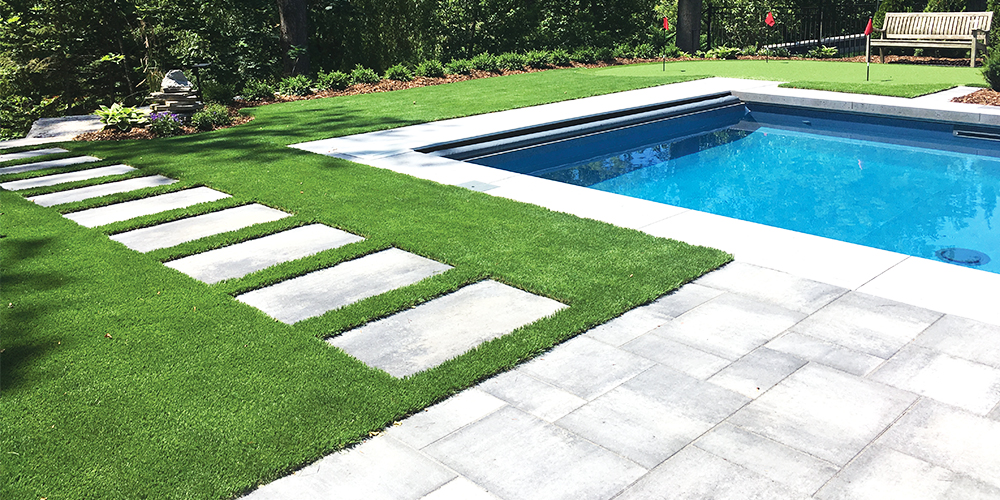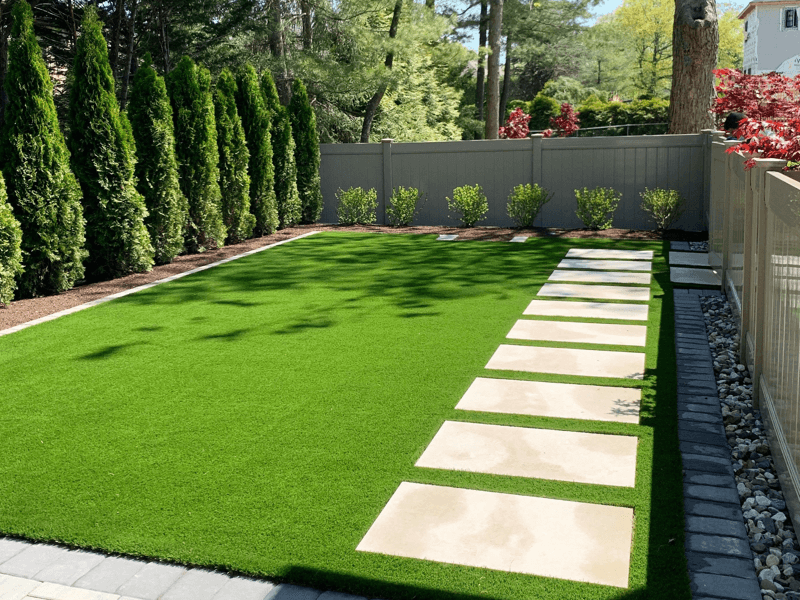Explore the Environmental Benefits of Opting for Artificial Lawn Solutions
The fostering of man-made lawn solutions presents a compelling possibility to attend to pushing environmental difficulties. By significantly reducing water use and lessening the application of damaging chemicals, these options not only advertise lasting landscape design however likewise secure regional environments. In addition, the lower carbon impact connected with reduced maintenance activities adds to a more lasting method to land administration. The effects of these benefits prolong beyond plain conservation efforts, elevating concerns about their lasting influence on environment conservation and general environmental balance. Discovering these dimensions discloses an intricate interplay worth taking into consideration.
Water Conservation Benefits
One of one of the most substantial benefits of synthetic grass is its capacity to conserve water. Conventional lawn yards require considerable watering, particularly in locations susceptible to dry spell or water restrictions. In contrast, synthetic grass does not need watering, substantially minimizing the general need for water resources. This attribute is particularly helpful in deserts where water deficiency is a pushing problem.
By getting rid of the demand for normal watering, fabricated turf adds to lasting landscape techniques and assists alleviate the ecological effect of too much water usage. Moreover, the conservation of water reaches the decrease of drainage, which can result in dirt erosion and waterway air pollution.
Additionally, the installation of fabricated grass enables communities and property owners to allocate water resources more efficiently, concentrating on essential usages such as alcohol consumption water and farming. The shift in the direction of synthetic grass not only promotes accountable water use yet likewise aligns with more comprehensive ecological objectives focused on maintaining all-natural resources.
As areas significantly prioritize sustainability, the water preservation advantages of synthetic grass present an engaging situation for its adoption in household and industrial landscape design tasks.
Reduced Chemical Usage
The change to synthetic grass substantially reduces the dependence on chemical treatments frequently made use of in natural turf upkeep. Conventional lawn monitoring usually involves the application of chemicals, herbicides, and plant foods to advertise development and control parasites. These chemicals can pose dangers to human health and wellness, regional wildlife, and the atmosphere, adding to dirt and water contamination.
On the other hand, artificial grass removes the demand for these dangerous materials. When mounted, it calls for very little maintenance, mostly being composed of regular cleaning and irregular infill replenishment. This reduction in chemical use not only profits the instant environment however also adds to more comprehensive environmental stability. By minimizing the launch of synthetic substances right into the environment, synthetic grass promotes much healthier dirt and water systems.
In addition, the absence of chemical overflow connected with synthetic grass setups aids shield regional rivers from contamination, supporting marine life and preserving biodiversity. Phoenix turf companies. As neighborhoods significantly prioritize sustainable practices, choosing synthetic grass provides a viable option that straightens with ecological conservation goals. Via this change, homeowner can take pleasure in rich environment-friendly rooms without endangering eco-friendly health, leading the way for a much more lasting future
Reduced Carbon Footprint

In addition, the setup of synthetic grass can lead to considerable water preservation. Natural grass need considerable quantities of water for irrigation, which not only contributes to the carbon footprint related to water removal and therapy however also strains visit this site right here regional water sources. On the other hand, fabricated turf needs very little upkeep, calling for no watering, thus significantly reducing water use and its connected energy prices.
Additionally, the long life of fabricated grass contributes to its decreased carbon influence. With a life expectancy of approximately 15 years or more, the demand for regular substitutes is diminished, resulting in much less waste my link and reduced power intake in manufacturing and getting rid of typical turf alternatives. Generally, man-made grass presents a sustainable option for eco conscious landscape design.
Environment Preservation
Environment preservation is an important factor to consider in the discussion over landscaping choices, particularly when contrasting fabricated lawn to all-natural lawn. Natural lawn lawns commonly call for considerable maintenance, including using fertilizers, herbicides, and chemicals, which can adversely impact regional communities. These chemicals can leach right into the dirt and rivers, harming native flora and animals and disrupting regional environments.
On the other hand, man-made grass offers a chance to minimize the ecological footprint of landscaping. By going with artificial turf, house owners can reduce the interruption of natural environments related to conventional yard treatment techniques. Synthetic grass eliminates the demand for damaging chemicals, thus protecting nearby wild animals and maintaining the stability of bordering environments. Furthermore, the setup of synthetic grass can cause the conversion of previous grass areas right into more biodiverse landscapes, such as pollinator gardens or native plant areas, which can support neighborhood wild animals.
Ultimately, the shift to synthetic grass not only saves water and reduces maintenance efforts but additionally cultivates a much more unified connection in between human tasks and the natural surroundings, advertising environment preservation while doing so.
Long-Term Sustainability
Long-lasting sustainability is an essential aspect in reviewing the benefits of fabricated grass over conventional lawn lawns. Among the most substantial advantages of synthetic grass is its resilience; it can last up to 15-20 years with minimal upkeep, whereas all-natural yard needs regular reseeding and replacement. This durability reduces the need for continuous resources, such as water, plant foods, and pesticides, which are necessary for preserving a healthy turf yard.
Furthermore, fabricated turf adds to a reduction in carbon discharges connected with lawn treatment devices. Traditional lawns frequently check over here need gas-powered lawn mowers, leaners, and blowers, every one of which add to air pollution. Phoenix turf companies. On the other hand, synthetic grass gets rid of the demand for such devices, advertising a cleaner environment
Furthermore, the manufacturing of synthetic grass significantly utilizes recycled products, enhancing its sustainability profile. As suppliers adopt eco-friendly practices, the ecological footprint of synthetic lawn remains to decrease.

Final Thought
The fostering of artificial grass services offers considerable environmental benefits, consisting of considerable water preservation, lowered reliance on damaging chemicals, and a lower carbon footprint. In addition, synthetic lawn help in preserving all-natural habitats by lessening land disruption and advertising long-term sustainability through using sturdy products. Collectively, these variables emphasize the possibility of man-made grass to contribute positively to environmental health and wellness and use a practical alternative to standard landscaping methods in a significantly resource-conscious globe.
In contrast, fabricated turf does not require watering, considerably lowering the general demand for water sources. By decreasing the release of artificial compounds right into the ecosystem, artificial lawn advertises healthier dirt and water systems.
Furthermore, the setup of man-made grass can result in substantial water preservation. In contrast, synthetic lawn requires minimal upkeep, requiring no watering, therefore significantly decreasing water usage and its linked energy prices.
